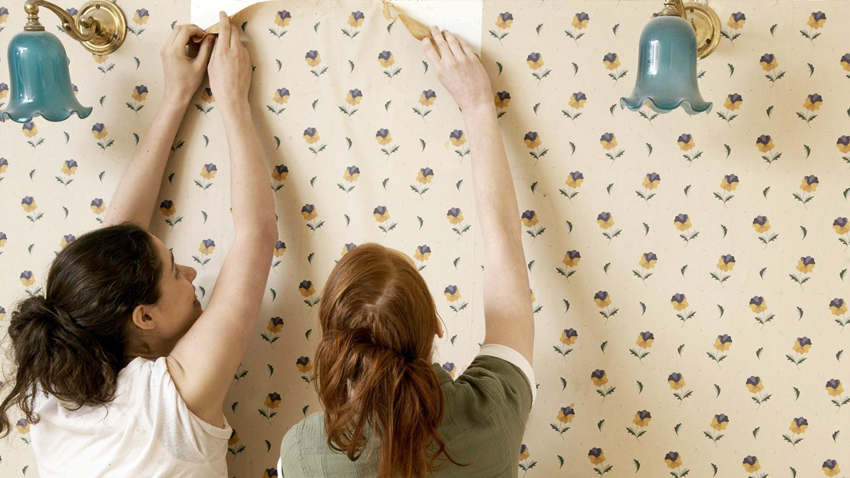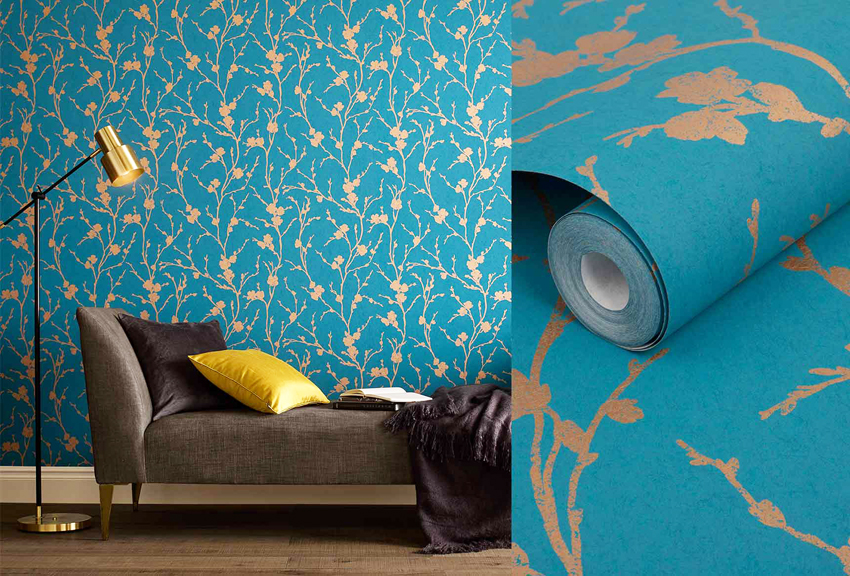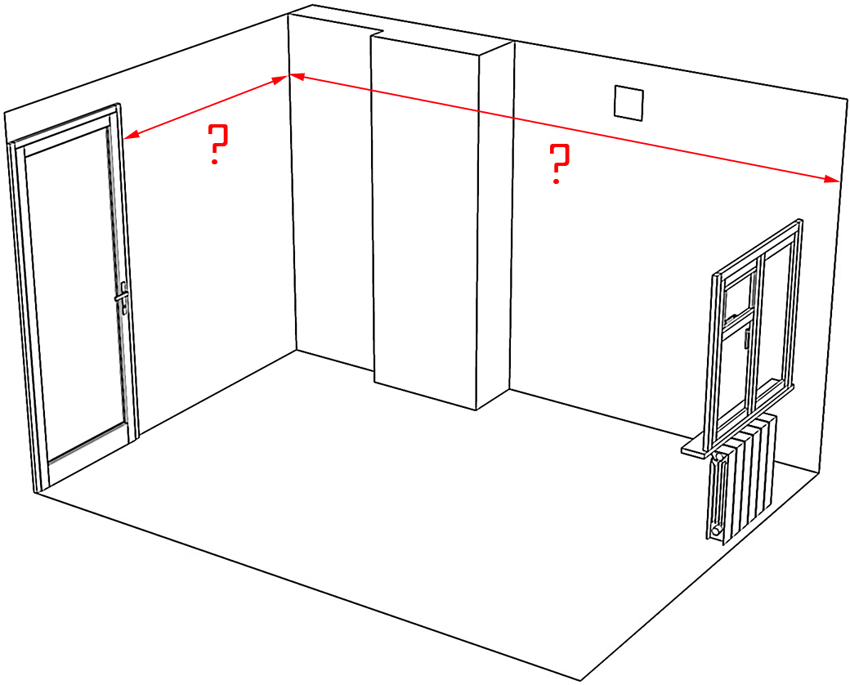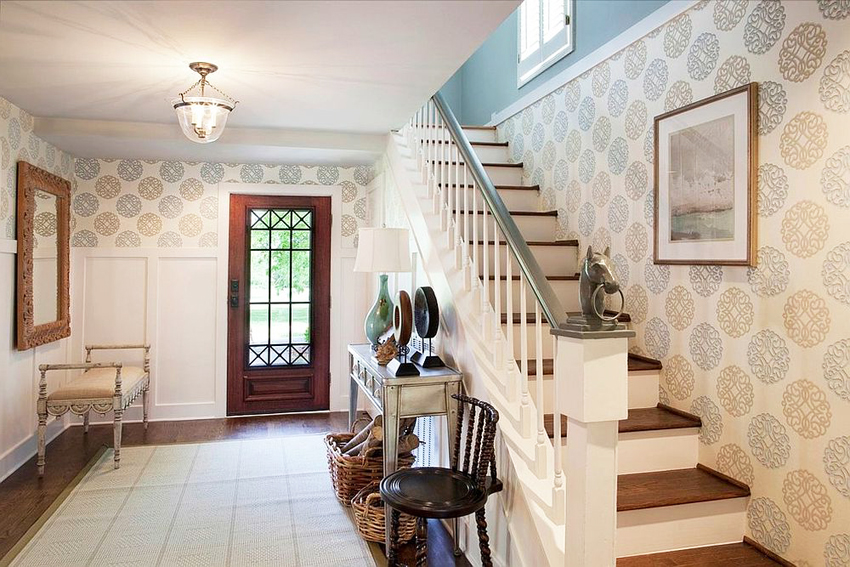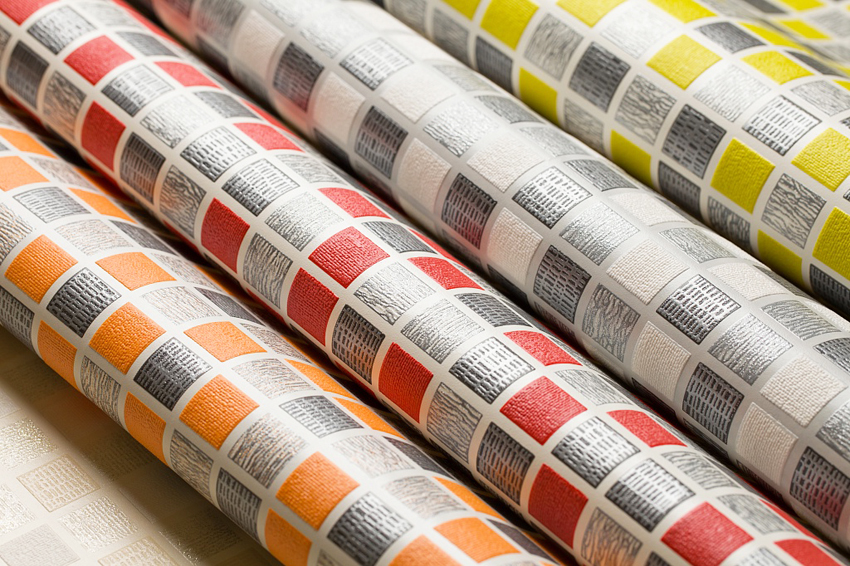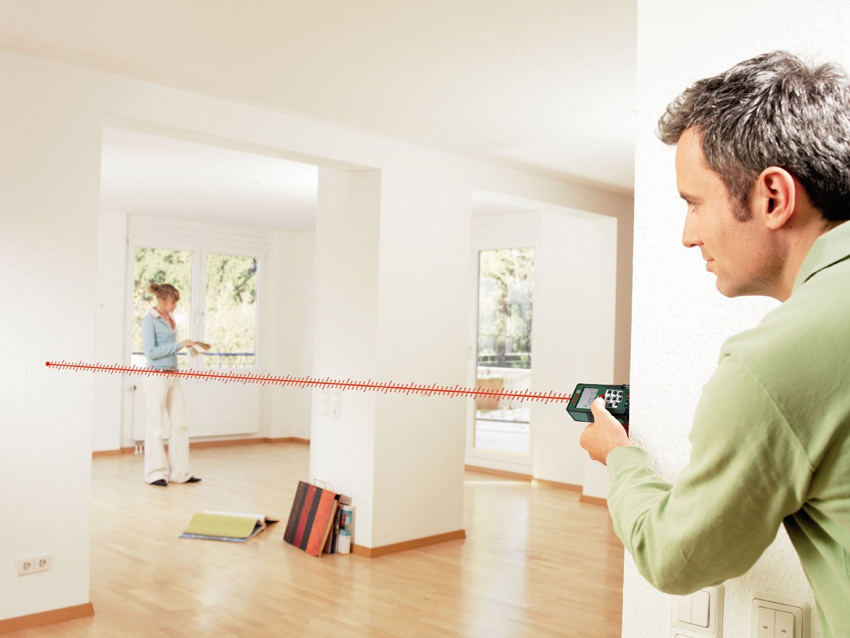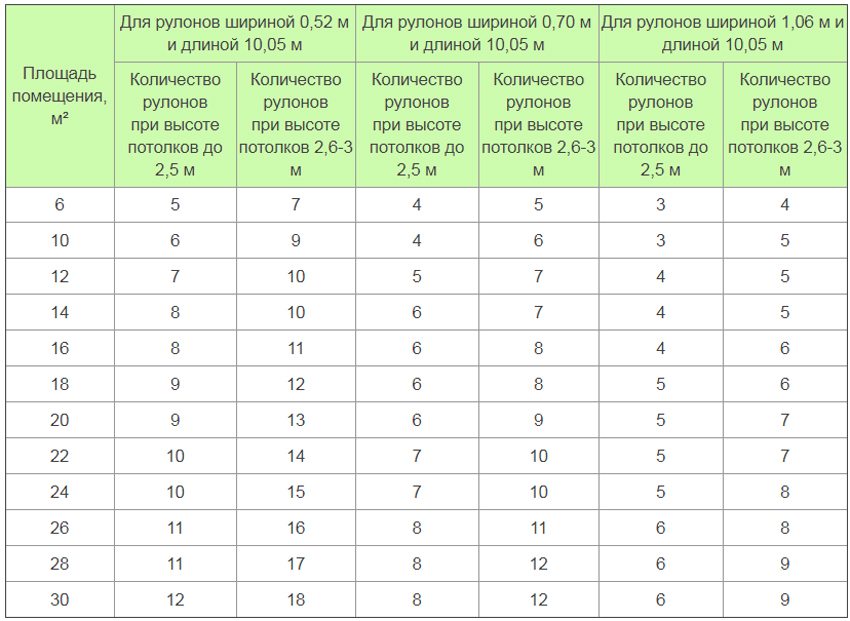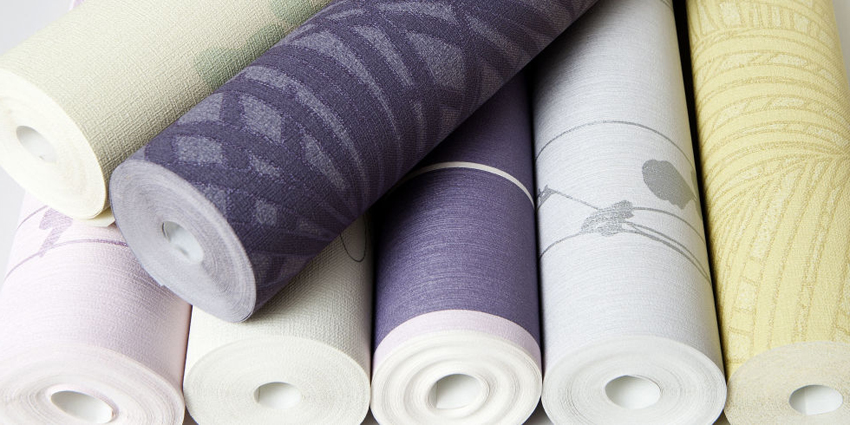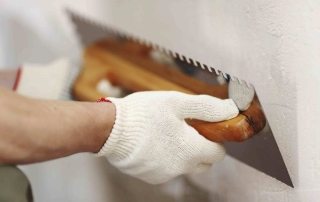The desire to renovate and update the appearance of the walls always begins with the choice of material. In the vast majority of cases, this is wallpaper. However, the most common problem is not to decide on their color and texture, but to not be mistaken with the number of rolls. Therefore, it is important to know how to calculate wallpaper for a room, so that you do not have to buy additional material or store excess material, complaining about wasted finances.
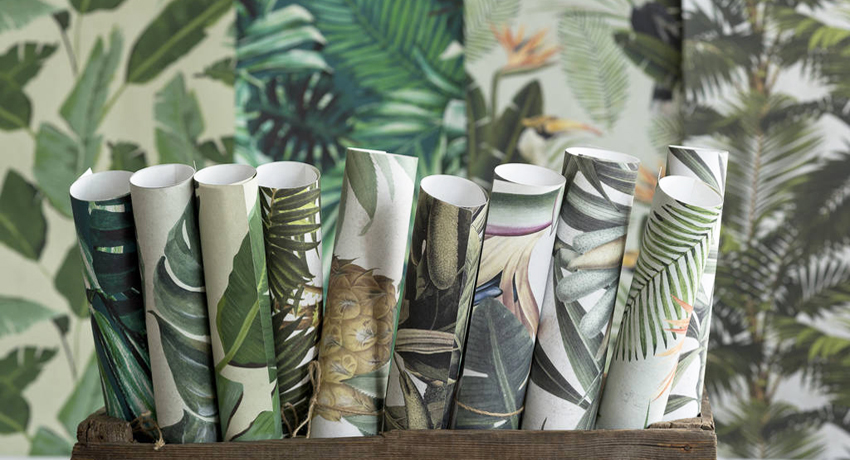
With the correct calculation of the number of rolls of wallpaper, you can avoid unnecessary problems when pasting walls
Content [Hide]
- 1 Where to start calculating wallpaper for repair
- 2 How to calculate wallpaper for a room: options, formulas, features
- 2.1 How to calculate the number of wallpapers per room around its perimeter
- 2.2 How to calculate the number of wallpaper by the area of the glued surfaces
- 2.3 Graphical method: calculate wallpaper for a room using visualization
- 2.4 How to Calculate Wallpaper Using Online Services
- 2.5 A way to calculate wallpaper for walls, adjusted for a design decision
- 2.6 Down with the calculator: how to calculate wallpaper for a room using tables
- 2.7 An example of mathematical calculation of the required amount of wallpaper for a room
- 3 Professional tips for counting wallpaper
Where to start calculating wallpaper for repair
The calculation of the number of wallpapers begins with the choice of the material itself for pasting a room or apartment. Even if the desired color and type of wallpaper are approximately known, there are nuances that are:
- in the wallpaper pattern;
- in the width of the roll;
- per roll meter.
All these factors directly affect the quantity of purchased material, costs and the final result.
Refer to the roll label for the information you need. The manufacturer must indicate running meters and width. The width of the wallpaper can be as follows: 0.52 m, 0.53 m, 0.7 m, 0.75 m, 0.9 m, 1 m, 1.02 m, 1.06 m.There are canvases that have a large width , most often these are stylistic prints (photo wallpaper). The length of the roll can also vary, but usually this value is 10.05 m, although there are options for 5.5 and 25 meters.
The pattern on the wallpaper plays an important role in the process of pasting the walls, it depends on it how much the cut of the roll will move so that the finished wall looks solid and no joints are visible.
All wallpapers are made with a repetition of a certain pattern at regular intervals - rapport. The higher the rapport, the more centimeters from each roll will be trimmed to fit. Manufacturers indicate these parameters directly on the packaging, using a special marking of the displacement and joints of the panels.
The rapport is not taken into account when purchasing plain wallpaper with an abstract small pattern or stripes.In all other cases, it will have to be aligned horizontally so that each cut starts with the same element. When rapport with end-to-end alignment, "superfluous" may be almost the entire height of the repeating pattern.
It is worth considering another option, when ornate patterns that look great on the wall, when glued, cause excessive consumption of running meters of the roll. They dock with the greatest displacement. This value can be recognized by marking and preliminary estimate how much material will have to be cut, whether the appearance is worth the estimated financial costs.
Before starting to calculate the number of wallpapers per room, it is necessary to first evaluate the offered assortment, focusing on several options. Carefully review the labeling and remember or record the data. This will help in further calculations.
How to calculate wallpaper for a room: options, formulas, features
To know how to calculate the required amount of wallpaper, you will need to use one of the methods:
- along the perimeter of the walls and the number of cut strips;
- by the area of the walls and all glued surfaces;
- the use of online applications and wallpaper calculator services.
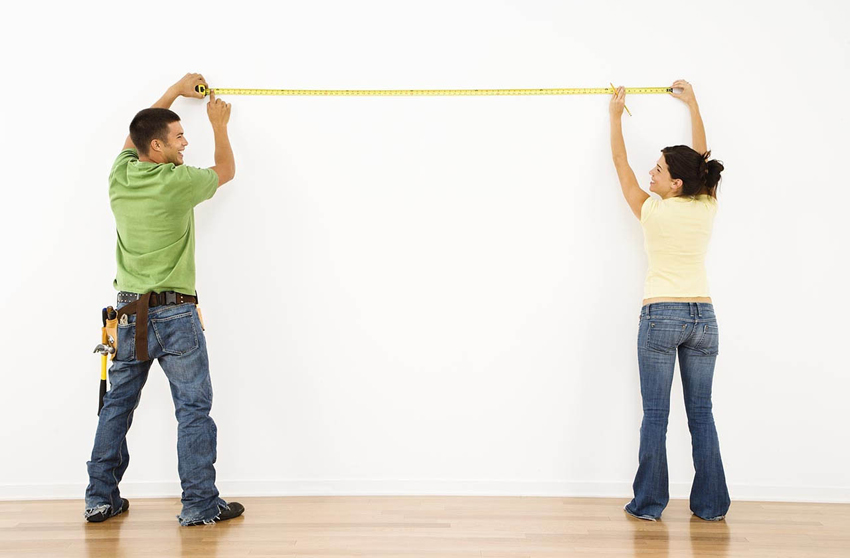
One way to calculate the number of wallpaper is to measure the perimeter of the walls and the number of strips to cut.
Each of these methods has its own calculation errors, but using them is much more efficient than buying wallpaper without any clarifications at all. From available tools, it will be necessary to prepare a tape measure for measurements, paper and a pen for notes and a calculator. Calculating the number of wallpapers per room is simple, you don't need outstanding mathematical skills, the main thing is to understand the principle and follow it.
Important! All measurements should be taken with a tape measure only. Estimates and large tolerances will not lead to accurate calculations.
How to calculate the number of wallpapers per room around its perimeter
The perimeter is the sum of the lengths of all sides of the polygon. In this case, the polygon is the room in which the renovation will be carried out. Take a tape measure and measure the lengths of all walls from corner to corner, excluding the skirting board and frieze. If the room is made with a bay window, each wall is also necessarily measured. Do not be too lazy to measure all the walls, because it may turn out that surfaces that are visually parallel are in reality not exactly the same in length.
Now you can calculate the perimeter of the room as the sum of all measured sides:
- P total = length 1 + length 2 + ... + length N,
where N is the number of walls in the room.
The next step is to measure the height of the room from floor to ceiling. To do this, you need to use the tape measure again.
Useful advice! The height of the ceilings can vary within one room by several centimeters. Therefore, take several measurements and select the largest value.
When you know the height of the walls, you can find out the length of one cut of the wallpaper. In this case, you will need the marking data of the rolls selected earlier in the store:
- web length = room height + rapport height + offset value + 5 cm allowances on top and bottom for trim
Now, again, you need to refer to the marking to find out the length of each roll, because the next step will be to calculate the number of fabric cuts in one roll:
- number of cuts per roll = length of 1st roll / length of 1st blade
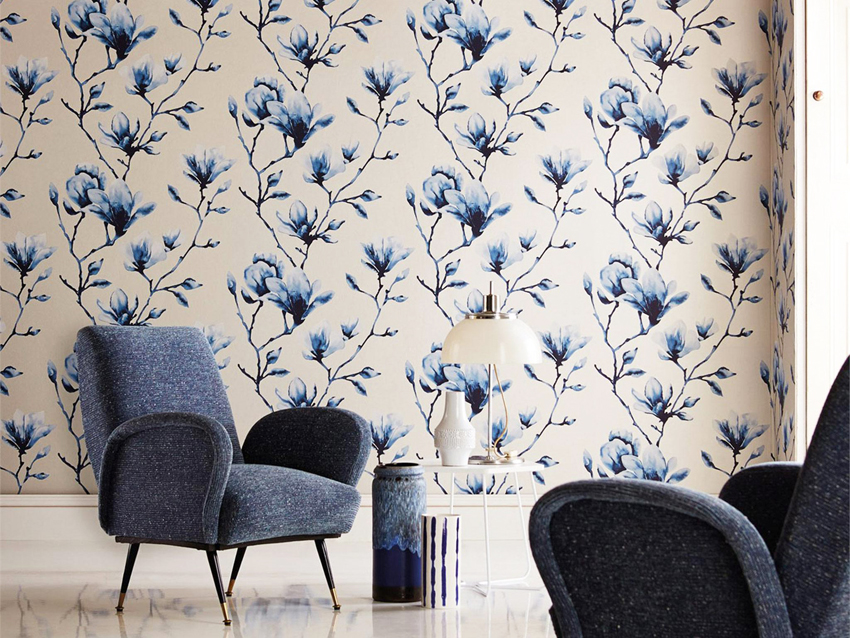
When wallpapering with the pattern, you need to adjust the stripes to match the pattern
Using a known roll width, you can calculate how many cuts are needed to cover the entire room:
- number of cuts per room = room perimeter / roll width
And finally, the main calculation is how to calculate the number of wallpaper rolls per room:
- number of rolls = number of cuts per room / number of cuts per roll
When trying to calculate the number of wallpaper rolls, the calculator will not show an integer value. It should be rounded up, as rolls are not sold in parts.
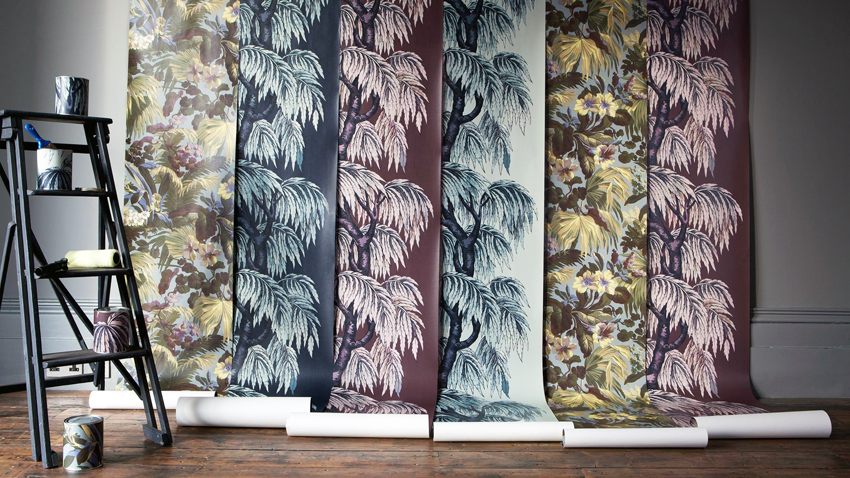
If, when calculating rolls of wallpaper, a non-integer number is obtained, then it must be rounded up
The complete algorithm on how to calculate the number of rolls of wallpaper around the perimeter of the room will look like this:
- Measure the lengths of all walls.
- Measure the height of the room.
- Calculate the perimeter of the room using the formula.
- Find out the length of one sheet for pasting.
- Calculate the number of cuts in the roll.
- Calculate the total number of cuts for all walls.
- Find out the required number of selected wallpaper rolls.
Important! When calculating canvases for one roll, the resulting value should be rounded down in order to know the number of whole cuts. When calculating the total number of cuts for the whole room, you need to round up, on the contrary, upwards, so that there is guaranteed enough wallpaper for pasting.
How to calculate the number of wallpaper by the area of the glued surfaces
Considering the perimeter when determining the amount of wallpaper to renovate is not a very accurate method, because it does not take into account the presence of wall openings for doors and windows. To clarify the data, it is worth calculating the area of \ u200b \ u200bthe walls, the calculator will cope with this easily, but more measurements in the room have to be done. You will need data on the dimensions of the walls, all available openings, protrusions, niches, taking into account the features of the relief and layout of the room.
Initially calculated using a wall area calculator - each separately, using the formula:
- wall area = wall length x wall height
If the selected wallpaper has a repeating pattern and offset, then the repeat height and offset must be added to the wall height. Their values are indicated on the roll packaging.
The results are then summarized. Further, in a similar way, the areas of all openings are calculated and their sum is also found. Then the calculator calculates the area of the walls that will go under the wallpaper:
- wallpapering area = total wall area - total area of openings
These data are still insufficient to determine the number of rolls. To find out the final value, you need to first calculate the area that 1 roll of wallpaper can cover:
- area of 1st roll = width of 1st roll x length of 1st roll
The width of the roll and its length are taken from the marking of the selected wallpaper of the room, it is already set by the manufacturer and is on the label attached to each material.
Now the last step is to calculate the total number of rolls needed for the repair:
- number of rolls = area of wallpapering / area of 1 roll
Most likely, when calculating rolls of wallpaper for the area of the room, the calculator will show a non-integer number. For the final result, it needs to be rounded upwards.
The complete area calculation algorithm can be formulated as follows:
- Measure the dimensions of all walls and openings in the room.
- Calculate the area of each wall using the formula and add the values obtained.
- Find out the total area of openings by summing the previously calculated areas of each of them.
- Calculate the difference between the total area of the walls and the total area of the openings. This will be the surface for wallpapering.
- Find out the area of one selected roll of wallpaper.
- Make a calculation using the formula for determining the number of rolls required for repair.
Graphical method: calculate wallpaper for a room using visualization
It is quite easy to correctly calculate the number of wallpapers, as the described methods show. However, for clarity, you can present the calculations graphically, in which case they will be easier to perceive visually.Additionally, it will become clear where to start gluing, where trimming, forming corners, etc. will take place.

When gluing wallpaper, taking into account the fit of the pattern, you will need an additional roll to decorate the walls above the openings
For the graphical method, you must:
- Draw in expanded form a sketch of the room taking into account the dimensions of the walls and all openings.
- Indicate on the diagram all known heights and widths.
- Apply a grid of wallpaper, knowing their width.
- Calculate the number of resulting cuts.
- Calculate the length of the web and the number of cuts in the roll, as was done in the method for calculating the perimeter.
- Calculate the number of wallpaper rolls per room, rounded up to the nearest whole number.
Related article:
Provence-style wallpaper for an elegant and luxurious design
How to choose the right Provence style wallpaper. Selection criteria for the design of the bedroom, kitchen, living room and children's room.
On the other hand, if the width of the new wallpaper coincides with the width of the old wallpaper with which the room is pasted over, you can count the number of canvases needed directly on the walls.
How to Calculate Wallpaper Using Online Services
The Internet helps in solving many issues, so if you do not want to do the calculations manually, you can calculate the number of wallpapers online. Different types of counting programs are published on specialized sites. It is recommended to choose those where you want to specify the largest number of room parameters and characteristics of the selected material.
The online calculator builds the calculation of wallpaper on the basis of the data that is loaded into it for processing. You will definitely need the parameters of the walls: length and height. If the calculator is of high quality, then it will contain columns for filling in the dimensions of door and window openings, as well as taking into account the displacement of the picture.
Important! Pay attention to the units of measurement for all fill-out fields of the online calculator form. It is permissible to calculate wallpaper for a room in meters or centimeters. Only the same units are used for one form.
All that is required to get the result is to correctly fill in all the fields and press the counting button. The program will instantly calculate. Using the online calculator, wallpaper can be calculated directly in the store, thus it is easier to navigate in the price range of choice.
A way to calculate wallpaper for walls, adjusted for a design decision
Inspired by design solutions, you can perform pasting in one room with a combination of several types of wallpaper. It will be bold and extraordinary if you choose the right combination. In this case, you can calculate the number of wallpapers in any of the above ways, only you need to take into account each type of material separately.
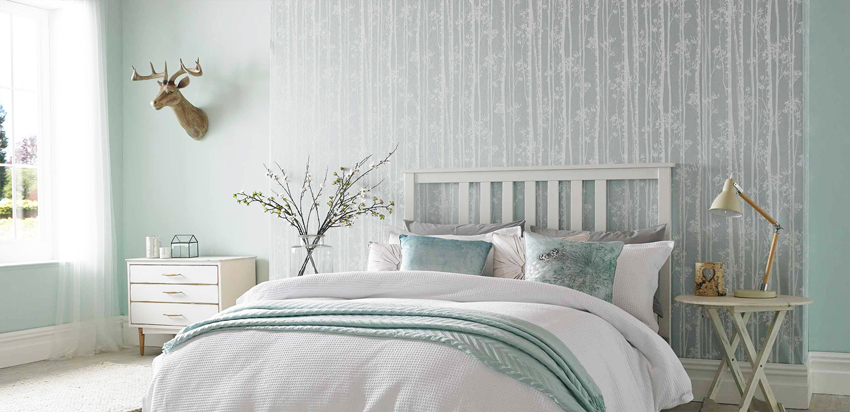
To calculate the wallpaper for pasting a room, taking into account the design solution, you can use any method for calculating the number of required rolls
For example, an insert can occupy the entire area of one of the walls. Then the number of basic wallpaper for 3 walls is determined, plus it is separately found out how many rolls are needed for pasting the insert. Difficulty can arise if the selected combination of materials has different roll widths, so pay attention to the labeling. Particularly careful approach to measurements should be taken if a 3D print or photo wallpaper is used for insertion.
Another option: the decor does not occupy the entire wall, but only a part of it, and there is a space filled with the main wallpaper on top, on the sides and, possibly, on the bottom (panel organization). In this case, the decorated insert is taken as an additional wall opening. You can calculate the wallpaper for a room either with an online calculator or manually. The calculation of the material consumption for the decor is made separately in any way.
If you thought to paste over the wall with the organization of panels and edging with a border, then for the wallpaper of the top and bottom (panels), calculations are made separately in a convenient way, taking into account the characteristics of the selected material.
Down with the calculator: how to calculate wallpaper for a room using tables
If it is difficult to calculate using simple but numerous formulas and a calculator, wallpaper for walls can be calculated in a different way. For this, reference auxiliary tables are used, compiled taking into account the width and length of the rolls, as well as the geometric dimensions of the premises. The values indicated in them can serve as a guideline for the purchase of material for repairs, and as a check of independently performed mathematical calculations along the perimeter and area of the walls.
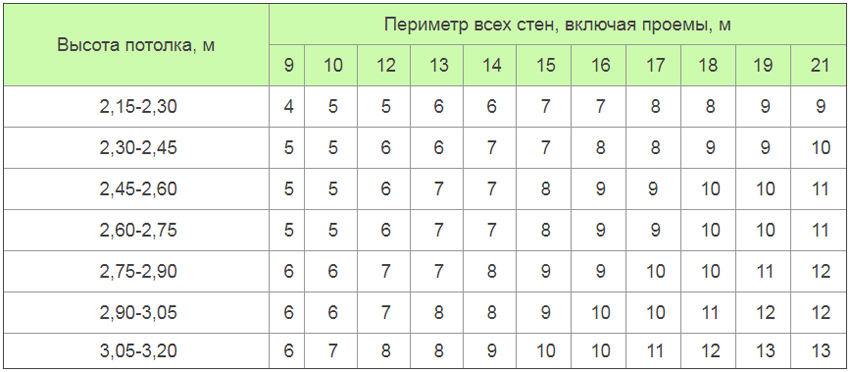
According to the table, you can find out the number of rolls when calculating wallpaper around the perimeter of the room for rolls 0.52 m wide and 10.05 m long
The tables were compiled without taking into account the pattern rapport or its displacement, therefore, the sought values must be corrected for the height of the ceilings, adding additional data on the pattern features to the measured values of the room. Thus, the measured ceiling height will be greater by the repeat height plus the offset height. To be scrupulously accurate, then it is worth adding more allowances for the curvature of the walls for the bottom and top of 5 cm. According to the total value, you should be guided in choosing the number of rolls according to the table.
Important! In the tables, the calculated floor area is taken, and not the total wall area, as in mathematical calculations.
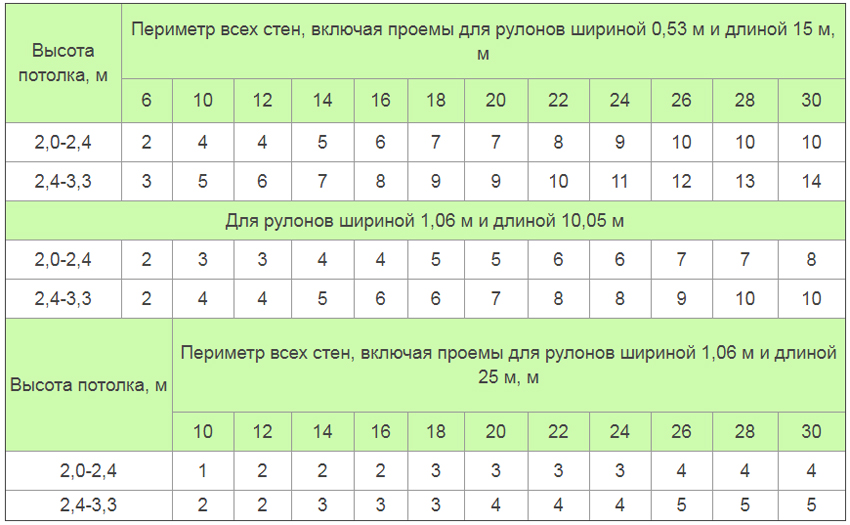
The table shows the number of rolls in accordance with the height of the ceiling and the perimeter of all walls
An example of mathematical calculation of the required amount of wallpaper for a room
To understand how the calculation methods described in the article work, we will perform calculations of the amount of material using a specific example.
Let's say you need to paste over a room where there is one window and a door. Initially, we take measurements indoors. For the selected example room, we get:
- room length - 7.5 m;
- room width - 3 m;
- ceiling height - 2.6 m;
- window dimensions - 2.1x1.5 m;
- door dimensions - 0.9x2.0 m.
Suppose that wallpaper with a large pattern was previously selected for pasting: the rapport height is 0.35 m and the offset is 0.25 m. Roll dimensions: width - 0.53 m, length - 10.05 m. the walls of the room have irregularities, so we will add 0.05 m allowances to them.
Note! All values for the calculation are reduced to one unit of measurement.
Using the calculation method along the perimeter, we find out how many rolls of the selected material will be required for pasting a room with the specified parameters:
- Room perimeter: (7.5 + 3) x 2 = 21 (m).
- The height of the web taking into account the rapport, displacement and allowances: 2.6 + 0.35 + 0.25 + 0.05 + 0.05 = 3.3 (m).
- Number of cuts per roll: 10.05: 3.3 = 3.05 (pcs.). We round down, we get 3 full-fledged canvases from the 1st roll and the remainder is 0.15 m long, i.e. practically the entire roll will be used.
- In total, you will need cuts per room: 21: 0.53 = 39.62 (m). We round the obtained data up, we get 40 cuts.
- We consider how many rolls are needed per room: 40: 3 = 13.33 (rolls). Rounding up the data for a small margin: 14 rolls are required.
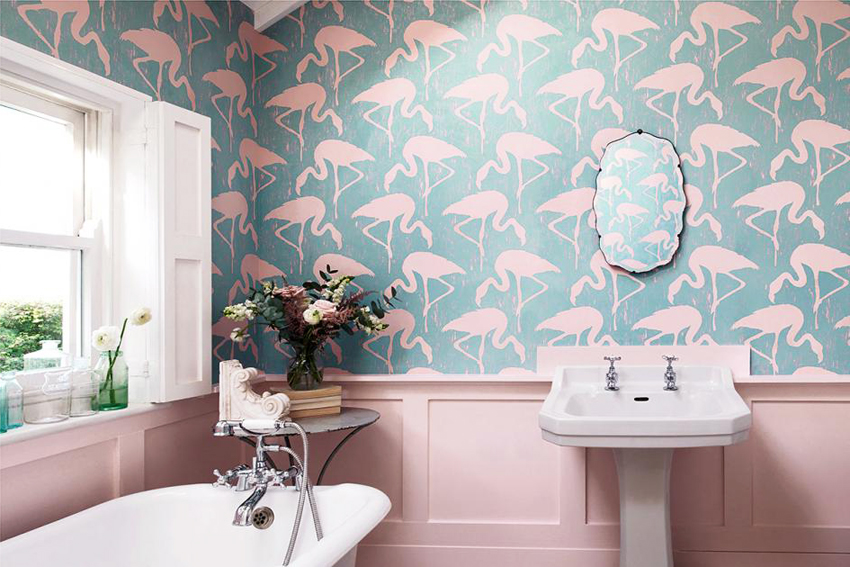
When calculating wallpaper around the perimeter, the area of windows and doors is not taken into account
Let's check the values by another calculation method - by the area of the room:
- Total wall area: (7.5 x (2.6 + 0.35 + 0.25 + 0.05 + 0.05) + 3 x (2.6 + 0.35 + 0.25 + 0.05 + 0.05)) x 2 = 69.3 (m²). Do not forget that we have selected wallpaper with a pattern, so we add the rapport height and offset to the ceiling height and additionally take into account allowances for wall unevenness.
- Window opening area: 2.1 x 1.5 = 3.15 (m²).
- Doorway area: 0.9 x 2 = 1.8 (m²).
- The total area of the openings: 3.15 + 1.8 = 4.95 (m²).
- We find out the required area for pasting (the difference between the total area of the walls and the total area of the openings): 69.3 - 4.95 = 64.35 (m²).
- Find the area of the wallpaper roll: 0.53 x 10.05 = 5.33 (m²).
- We calculate the total number of rolls for pasting: 64.35: 5.33 = 12.07 (rolls). We round up to a larger integer value and get the required value - 13 rolls. You can take a risk and round the result down due to a small fractional part in the calculations, however, it is recommended to always have a free stock of material when selecting a picture.
If you compare the calculation data for the perimeter and area, you will find a discrepancy in 1 roll, because in the second case, the window and door openings were taken into account, which are not covered with wallpaper. You can additionally check the calculations with an online calculator to finally make sure they are correct, as well as clarify in the reference tables.
Professional tips for counting wallpaper
So that the result of the repair does not disappoint, when calculating wallpaper and when buying them, you should pay attention to some details:
- Always purchase rolls from the same batch. Color may vary slightly from batch to batch. The shades are not very noticeable on the roll, but a serious flaw will come to light on the wall.
- Take a close look at the selected wallpaper. Even a small drawing can have a rapport, which can significantly increase material consumption. If the calculation was performed without taking into account the allowances for pattern matching, then the wallpaper may not be enough.
- You can save on footage by using the leftovers from cuts of solid panels. They are glued over doorways, as well as above and below the window. In this case, it is necessary that the lateral docking according to the drawing must be performed.
- If the rapport height is large and there is a large enough offset, it is worth buying an extra roll. With a large area of the glued room, they buy 1 additional roll for 6 calculated ones.
- When cutting canvases, always add allowances for the curvature of the walls, 5 cm is enough for the top and bottom. Consider this parameter when calculating.
- For narrow door openings (less than 60 cm), their area is not calculated. In this case, they are not taken into account at all, and it is assumed that a flat wall is located in their place.
- When paying for material in a store, ask about the possibility of returning wallpaper and be sure to keep your receipt. Returns are allowed within 14 days after purchase, if such a service is available in the store, the roll must be intact and unopened.
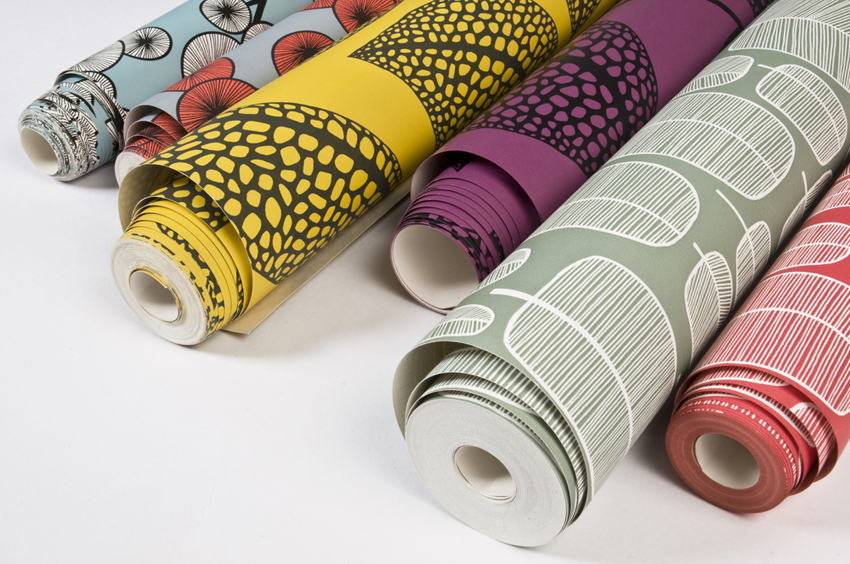
To save on wallpaper, you can use the pieces that are left from solid rolls for small sections of walls
The methods described in the article on how to calculate how much wallpaper is needed for repair are used, as a rule, when doing work on pasting premises on your own. Each of them has a small error, but everyone can cope with the main computational task.

